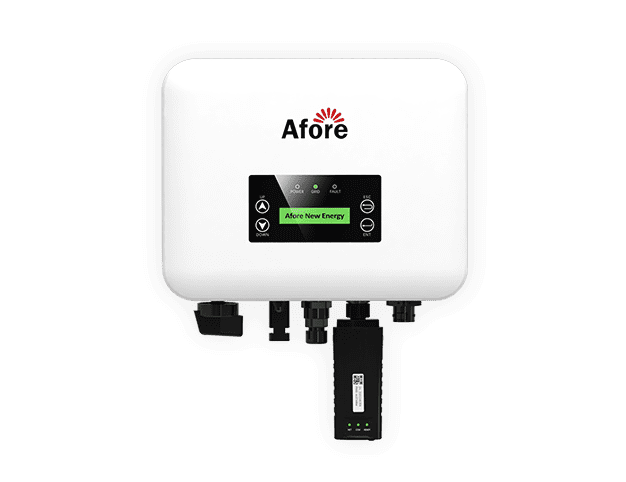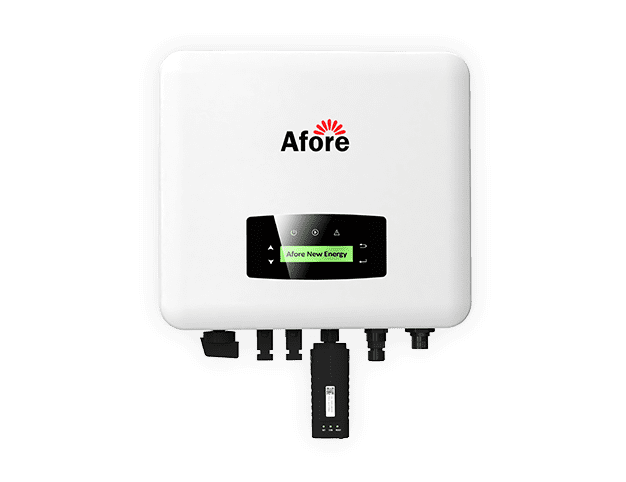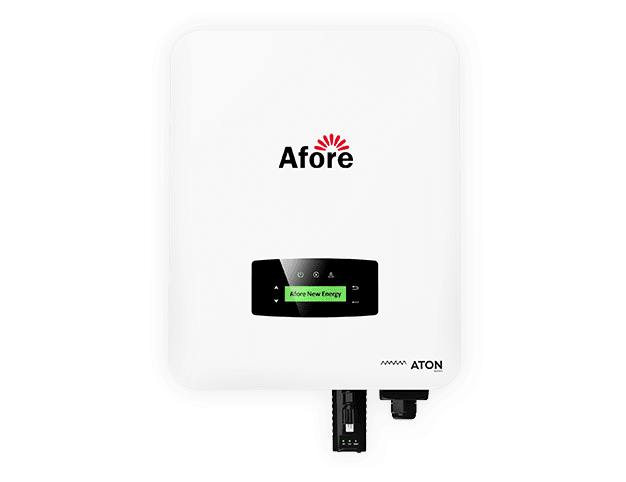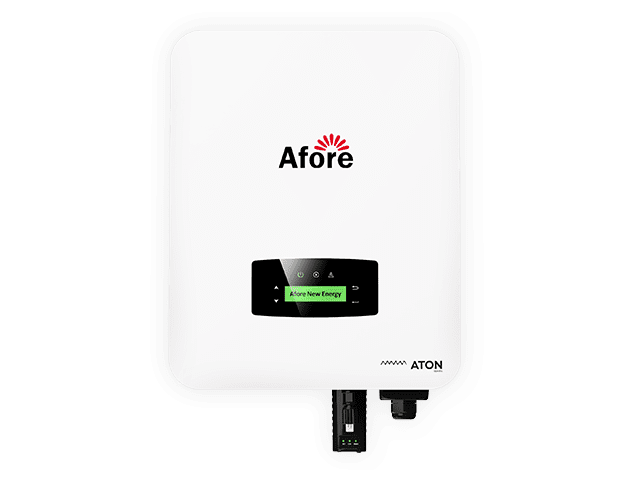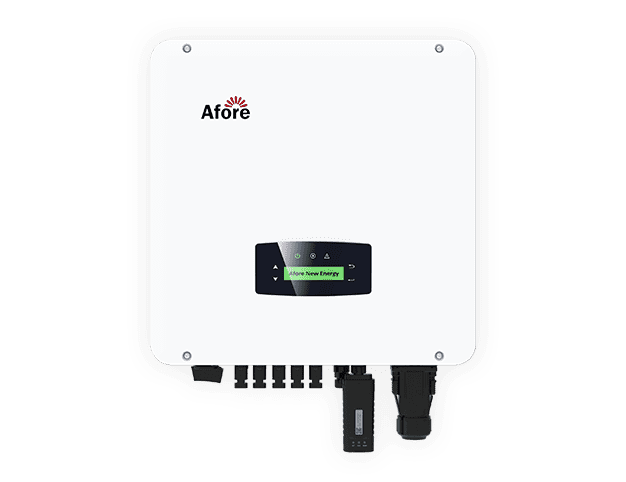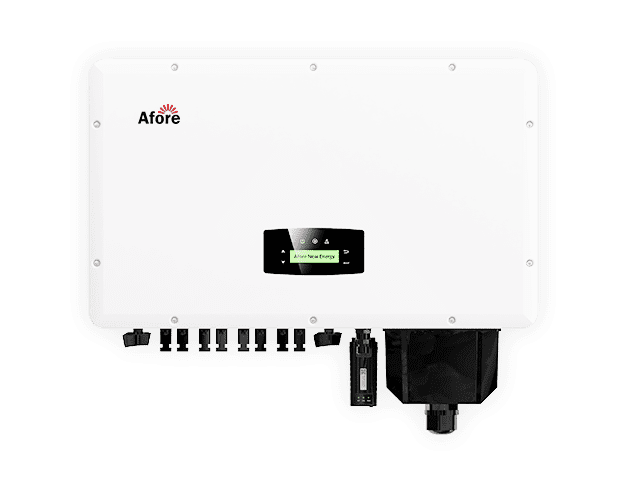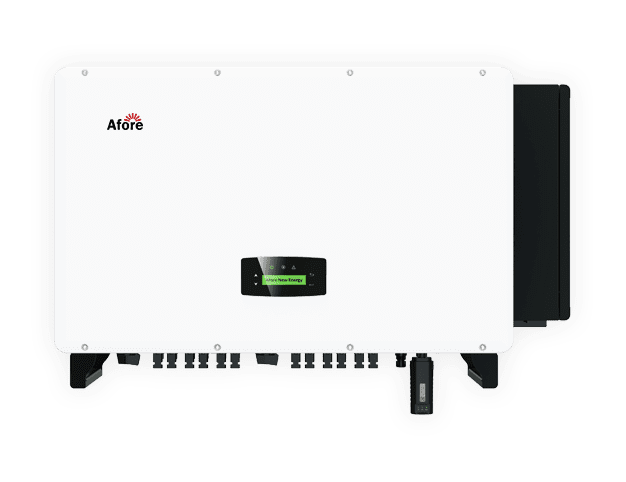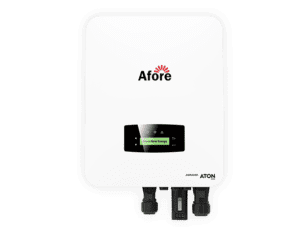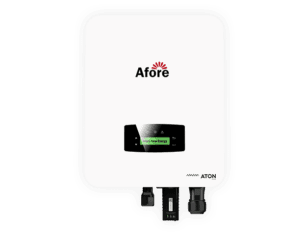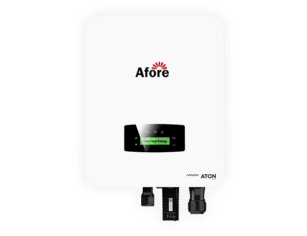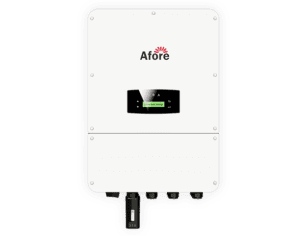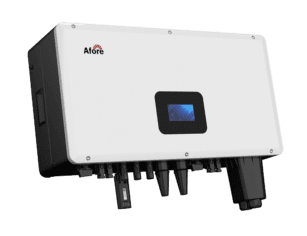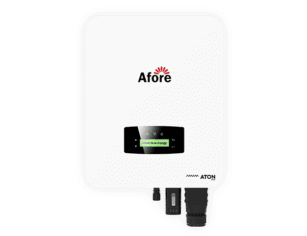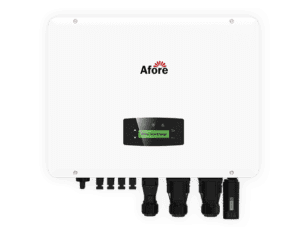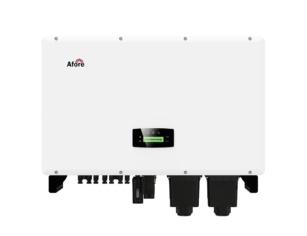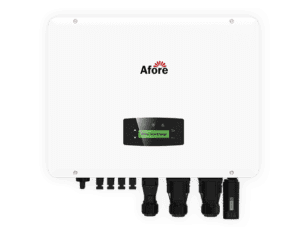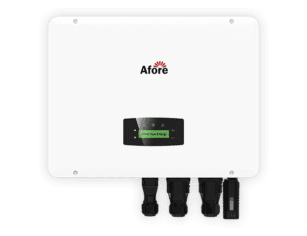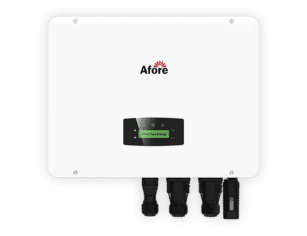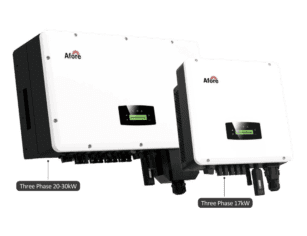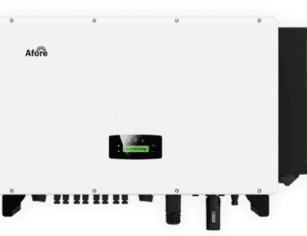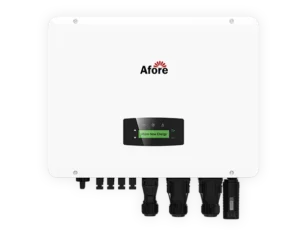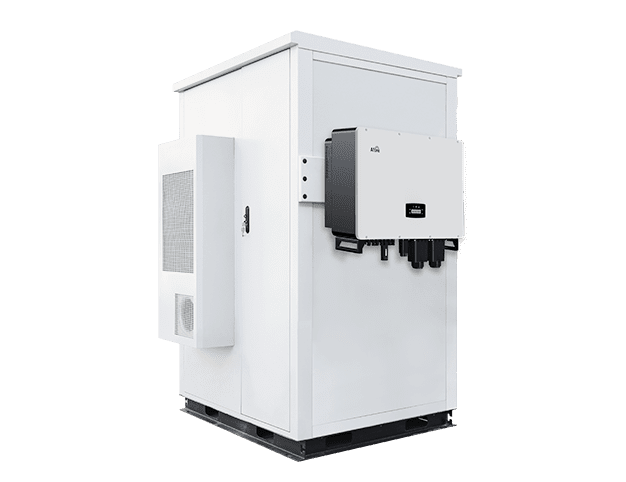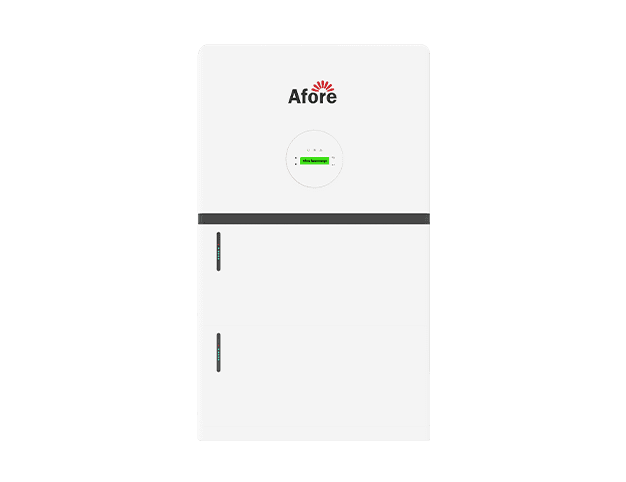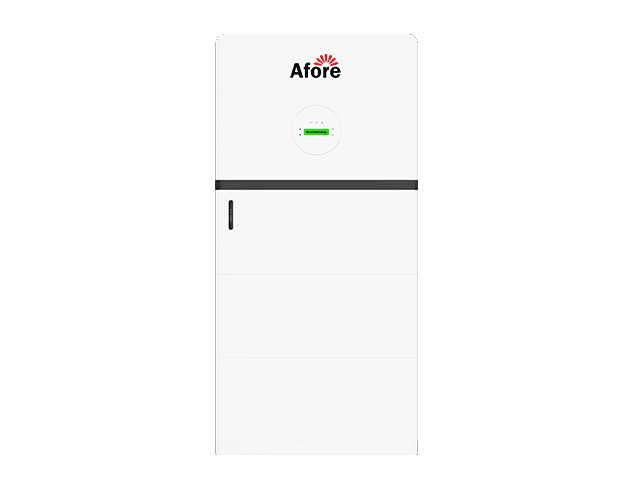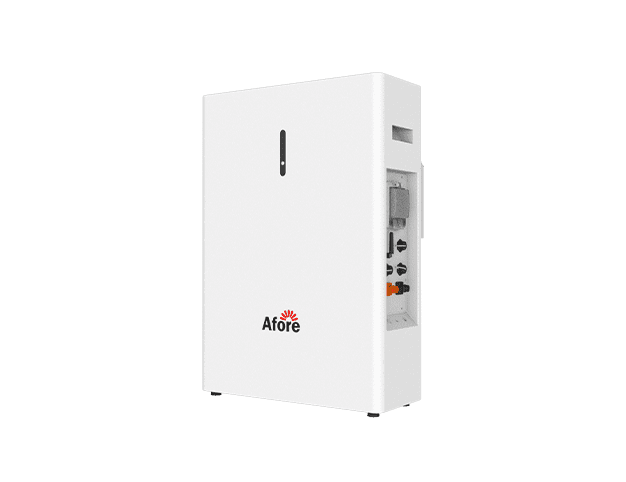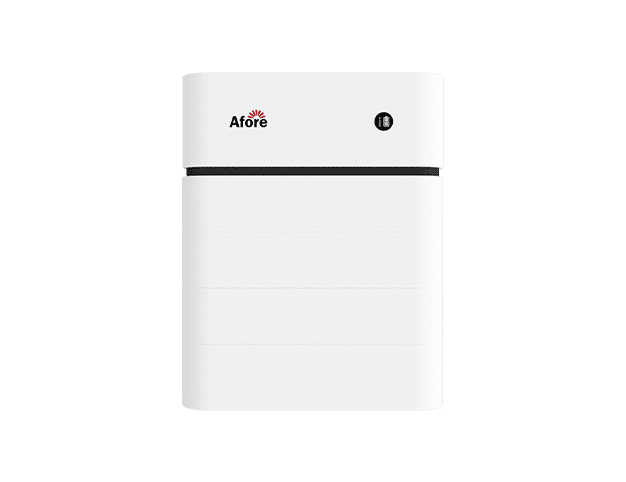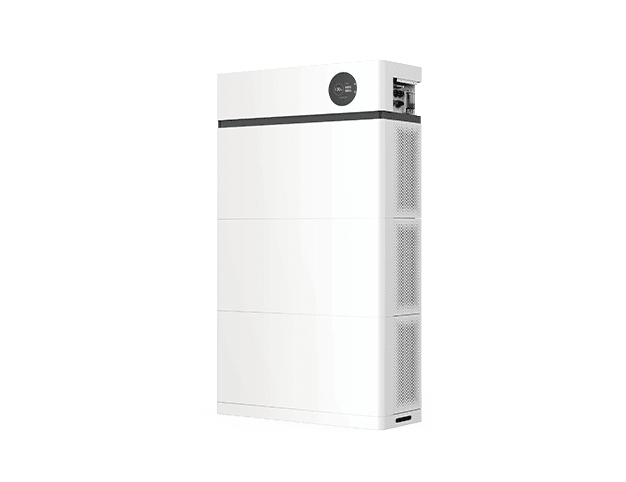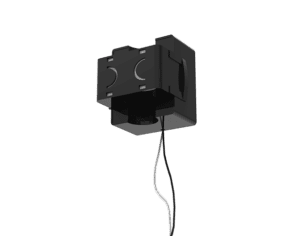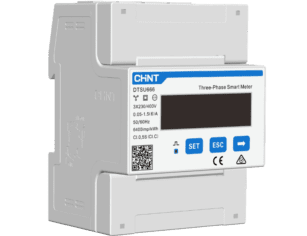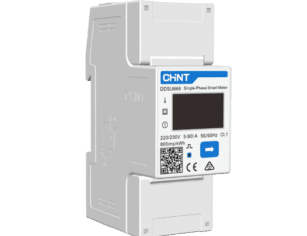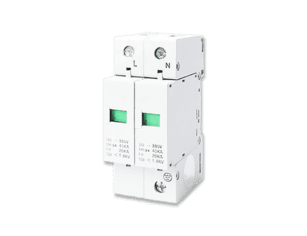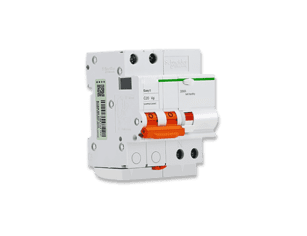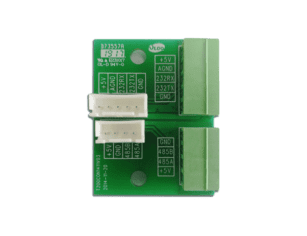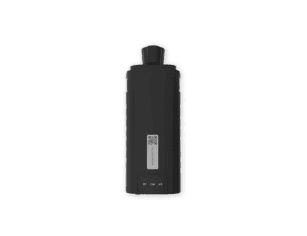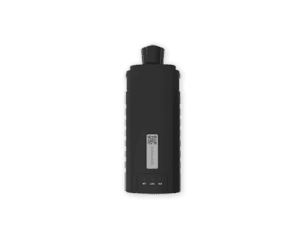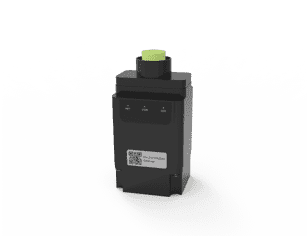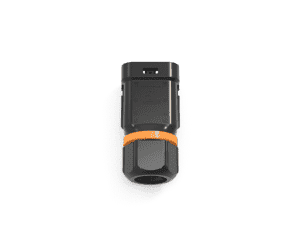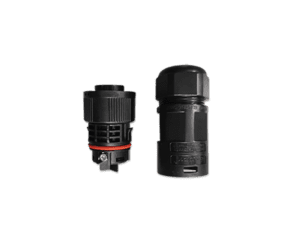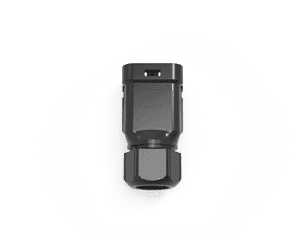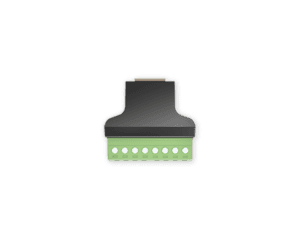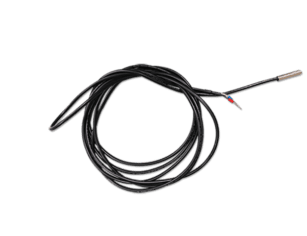Choisir le bon onduleur : le guide complet des onduleurs solaires et domestiques
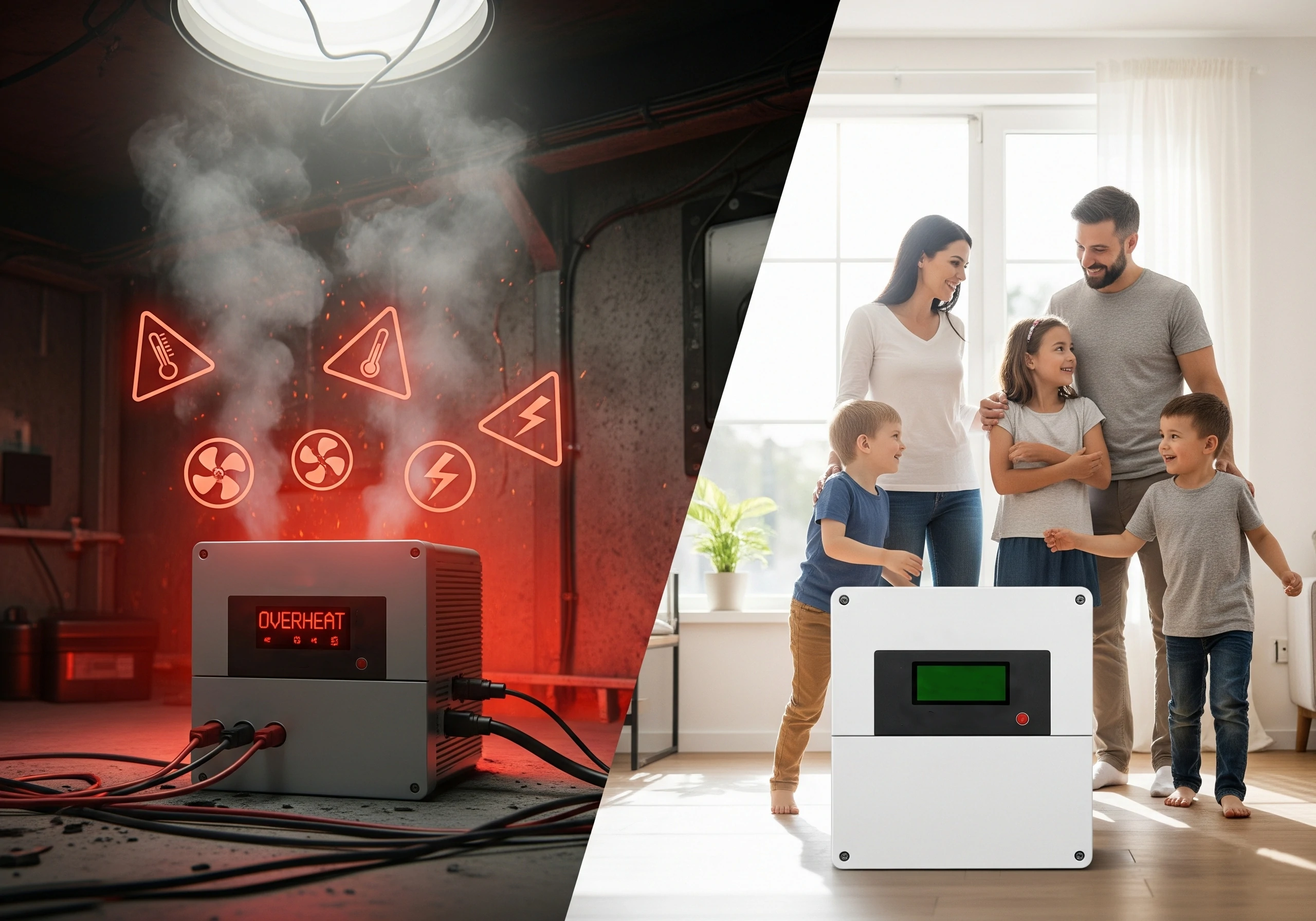
Table des matières
Si vous vous êtes déjà demandé comment faire fonctionner vos lumières, votre réfrigérateur et vos gadgets sans faire sauter les fusibles, ou si votre système d'alimentation de secours va boiter ou rugir, le choix du bon onduleur est l'une des mesures les plus intelligentes que vous puissiez prendre. Dans ce guide, je vous expliquerai tout ce que vous devez savoir pour choisir un onduleur solaire ou un onduleur domestique en général : calculs de charge, adaptation de la batterie, puissance de surtension, efficacité, sécurité, etc. À la fin, vous vous sentirez en confiance et vous économiserez probablement de l'argent, des maux de tête et peut-être même le remplacement de certains appareils.
Ce qu'il faut savoir avant de choisir le bon onduleur
Il n'est pas nécessaire d'être ingénieur pour y parvenir, mais il faut en comprendre les principes de base. Un onduleur est l'appareil qui convertit le courant continu (CC) - provenant de batteries ou de panneaux solaires - en courant alternatif (CA), qui alimente vos appareils électroménagers, vos lampes et de nombreux gadgets. Choisir le bon onduleur, c'est jeter un pont entre votre source d'énergie et votre vie quotidienne.
Pourquoi est-ce important ? Parce que la mauvaise taille ou le mauvais type d'onduleur peut entraîner des inefficacités, des surchauffes, des performances médiocres des appareils (ou pire), des pannes fréquentes ou un gaspillage d'argent. En revanche, un onduleur solaire ou un onduleur de secours domestique bien choisi vous apporte stabilité, sécurité et fiabilité.
Avant d'entrer dans le vif du sujet, définissons certains termes clés que vous rencontrerez fréquemment :
- Puissance continue (ou nominale) : nombre de watts que l'onduleur peut supporter en charge normale sans surchauffe ni surcharge.
- Puissance de pointe : pointes à court terme (par exemple, démarrage d'un moteur, compresseur) qui peuvent représenter 2 à 3 fois la puissance en cours d'utilisation.
- Efficacité de l'onduleur : fraction du courant continu que l'onduleur convertit en courant alternatif utilisable ; les pertes, la consommation à vide, etc. sont importantes.
- Capacité de la batterie : ampères-heures (Ah), tension et kWh utilisables après la profondeur de décharge (DoD).
- Rapport de charge de l'onduleur / rapport CC/CC : la quantité de courant continu solaire que vous alimentez par rapport à la quantité de courant alternatif que vous attendez.
Types d'onduleurs
Lorsque vous choisissez le bon onduleur, l'une des premières décisions à prendre est celle du type d'onduleur. Tous les onduleurs ne sont pas égaux et le "type" a une incidence sur les performances, le coût et les possibilités.
Onduleurs hors réseau, onduleurs connectés au réseau et onduleurs hybrides
- Onduleur connecté au réseau : conçu pour les systèmes connectés au réseau électrique. Si vos panneaux solaires ou votre batterie produisent un excédent, celui-ci peut parfois être réinjecté dans le réseau (en fonction des règles locales de comptage net). Cela permet de réduire le coût de la batterie, mais pendant les pannes, vos appareils sont souvent privés d'électricité, à moins qu'il n'y ait un onduleur de secours + un commutateur de transfert.
- Onduleur hors réseau : système indépendant. Toute l'électricité provient de sources locales (batterie, énergie solaire, générateur). Lorsque vous êtes hors réseau, vous devez dimensionner tous les éléments (panneaux solaires, batteries, onduleur) avec soin pour garantir la fiabilité.
- Onduleur hybride : il combine l'énergie solaire, le stockage sur batterie et le réseau ou le générateur de secours. Idéal si vous voulez de l'énergie solaire, de l'énergie de secours et de la flexibilité. Plus complexe, plus cher, mais plus d'options.
Onde sinusoïdale pure vs onde sinusoïdale modifiée
- Un onduleur à onde sinusoïdale pure fournit une énergie propre qui correspond étroitement à celle fournie par le réseau : c'est une bonne chose pour les appareils électroniques sensibles, les moteurs, les appareils électroniques dotés d'une alimentation, les appareils médicaux, etc.
- Onde sinusoïdale modifiée ou quasi-sinusoïdale : moins chère, mais peut provoquer des bourdonnements dans les moteurs, une réduction de l'efficacité de l'électronique, une augmentation de la chaleur, des interférences possibles.
Onduleurs de branche, micro-onduleurs et optimiseurs de puissance
- Onduleur de branche : les panneaux sont câblés en branches ; un onduleur central gère la branche. Avantages : coût moins élevé, plus simple. Inconvénients : une ombre ou un décalage sur un panneau se répercute sur l'ensemble de la chaîne.
- Micro-onduleur : Un micro-onduleur par panneau. Meilleures performances à l'ombre, maximisation au niveau du panneau, surveillance au niveau du panneau. Coût initial plus élevé.
- Optimiseur de puissance : Il s'agit d'un hybride entre le string et le micro ; il y a toujours un onduleur central, mais chaque panneau est équipé d'un optimiseur qui réduit les pertes dues à l'inadéquation et à l'ombrage.
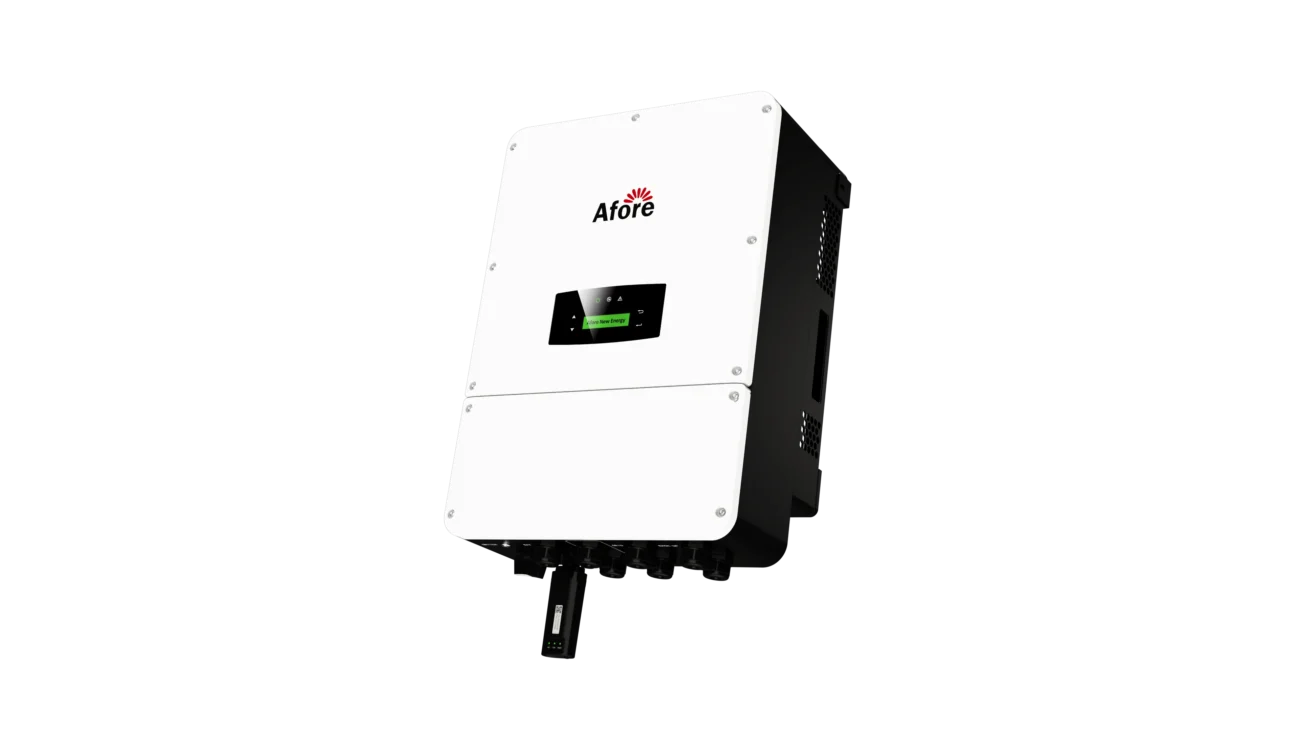
Comment déterminer la taille de l'onduleur
Passons maintenant au cœur de la question du "choix du bon onduleur". Passons aux étapes pratiques.
Évaluer vos besoins en charge
- Dressez la liste de tous les appareils que vous souhaitez que l'onduleur alimente - simultanément, si nécessaire. Pour chacun d'entre eux, notez les watts de fonctionnement et les watts de démarrage/de pointe. Exemples : réfrigérateur, climatiseur, pompes, lumières, télévision, compresseurs.
- Additionnez la puissance de tous les appareils que vous prévoyez d'utiliser en même temps.
- Ajoutez une capacité de surtension : les moteurs et les compresseurs consomment souvent plus au démarrage. Votre onduleur doit pouvoir gérer cela. Si votre réfrigérateur fonctionne à 700 W mais consomme 2200 W au démarrage, c'est un point critique. (De nombreuses sources recommandent 2 à 3 fois la capacité de surtension).
- Marge de sécurité ou tampon : après avoir ajouté les watts de fonctionnement et de surtension, de nombreux guides suggèrent d'ajouter ~20-30% pour couvrir les appareils futurs, les imprévus, etc. Ce tampon fait souvent la différence entre un système à peine adéquat et un système confortable et fiable.
Prise en compte de l'efficacité et des pertes
Votre onduleur n'est pas parfait, il a des pertes.
- Examinez le rendement (recherchez 90+ %) pour les charges que vous utiliserez couramment - et pas seulement pour une charge de 100%. De nombreux onduleurs sont moins efficaces sous des charges plus faibles. Un onduleur de 3000 W peut avoir un rendement de 931 TTP5T à pleine charge, mais baisser quelque peu à une charge de 10-201 TTP5T.
- Tenez compte de la consommation à vide : combien de watts l'onduleur consomme-t-il même lorsqu'il n'est pas utilisé ; c'est important pour une utilisation de secours ou une utilisation continue.
- Tenez compte des pertes de câblage, de l'inefficacité de la décharge de la batterie, des effets de la température (une température ambiante élevée réduit la puissance de l'onduleur / augmente les pertes), des facteurs de déclassement. Les panneaux solaires produisent également une puissance inférieure à la puissance nominale dans de nombreuses conditions.
Croissance future et marges de sécurité
- Si vous prévoyez d'ajouter des panneaux solaires, des appareils supplémentaires (CVC, chargeur de VE, etc.) ou d'augmenter vos batteries, tenez-en compte dans votre dimensionnement dès maintenant. Vous ne voudrez pas remplacer l'onduleur plus tard.
- Un tampon (~20-30%) au-dessus de votre charge actuelle est raisonnable. Choisir le bon onduleur signifie équilibrer les besoins actuels avec une expansion future raisonnable.
Adaptation au champ solaire (pour les onduleurs solaires)
En effet, les onduleurs solaires sont spécifiquement conçus pour prendre le courant continu des panneaux solaires et produire du courant alternatif :
- Veillez à ce que la puissance CC totale du champ solaire corresponde bien à la capacité d'entrée de l'onduleur solaire. Si le côté CC est trop faible, vous sous-utilisez le potentiel solaire. S'il est beaucoup plus important, il peut y avoir un écrêtage (l'énergie solaire produit plus de courant continu que ce que l'onduleur peut convertir en courant alternatif). Un certain écrêtage est acceptable pour l'optimisation des coûts ; de nombreux systèmes conçoivent un rapport CC/CA d'environ 1,2 à 1,5.
- Vérifier la tension et le courant d'entrée maximum de l'onduleur (tension en circuit ouvert, Voc, courant en court-circuit, Isc), s'assurer que les branches du panneau ne dépassent pas les limites de sécurité.
- Pour les onduleurs solaires, il faut également déterminer s'il s'agit d'onduleurs de branche, de micro-onduleurs ou d'onduleurs hybrides, et si un système de stockage par batterie est intégré ou sera ajouté.
Considérations relatives à la batterie
Si votre système comprend des batteries (presque certainement si vous utilisez un onduleur solaire hors réseau ou un système de secours hybride), celles-ci sont essentielles pour l'adaptation à l'onduleur.
Capacité et tension de la batterie
- La capacité de la batterie est généralement exprimée en Ah à une tension donnée (généralement 12V, 24V, 48V). Pour obtenir des kWh, utilisez : Volt × Amp-hour ÷ 1000 = kWh.
- Par exemple : un système 24V avec une batterie de 100Ah = 2,4 kWh (mais utilisable peut être moins, voir la profondeur de décharge). Pour faire fonctionner un onduleur de 2000 W pendant une heure, il faut plus de 2,4 kWh en raison des pertes.
Type de batterie et taux de décharge
- Plomb-acide (inondé, AGM, gel) contre lithium (Li-ion, LFP, etc.). Le lithium offre généralement une plus grande capacité d'utilisation, un poids plus léger et un plus grand nombre de cycles. Mais le coût est plus élevé.
- Courant de décharge : un onduleur consomme beaucoup de courant. Par exemple, un onduleur de 2000W sur une batterie de 12V a besoin de ~2000 / 12 = ~167A plus les pertes, peut-être plus en cas de surtension. La batterie et le câblage doivent supporter cela. Si ce n'est pas le cas, des chutes de tension ou des dommages en résulteront.
Fonctionnement de la relation entre la batterie et l'onduleur
- L'onduleur tire de la batterie un courant continu égal à la charge CA divisée par la tension de la batterie (plus les inefficacités). Charges élevées = courant élevé.
- Assurez-vous que votre parc de batteries (Ah × nombre de batteries) peut fournir le courant nécessaire, y compris la surtension, pendant la durée requise.
- Assurez-vous également que la chimie de la batterie, sa capacité, le contrôleur de charge/l'onduleur peuvent décharger/charger en toute sécurité selon les spécifications du fabricant (DoD, taux de charge/décharge, limites thermiques).
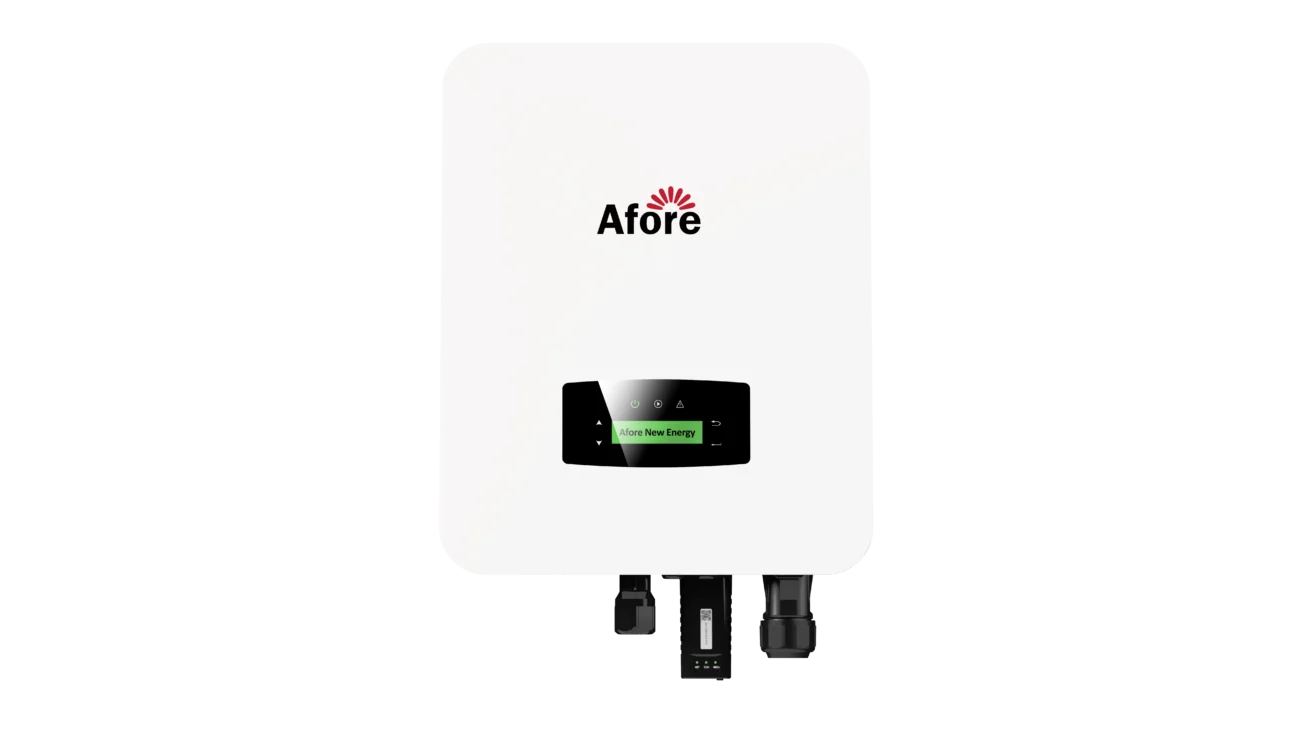
Sécurité, certifications et autres caractéristiques techniques
Il ne suffit pas d'avoir suffisamment de watts, il faut aussi du matériel sûr et certifié qui ne vous tuera pas et ne brûlera pas votre maison.
Traitement des surtensions et des charges de pointe
- Assurez-vous que l'onduleur peut supporter les charges de démarrage et de surtension des appareils tels que les compresseurs, les pompes et les climatiseurs. Si la capacité de surtension de votre onduleur est trop faible, il s'arrêtera ou sera endommagé.
- Par exemple, les réfrigérateurs peuvent fonctionner à 700-1000W mais ont besoin de 2000+W au démarrage. Il faut toujours dimensionner l'appareil en fonction de la surtension la plus importante de votre liste de charge.
Protections et certifications
- Caractéristiques à rechercher : protection contre les surcharges, surchauffe / arrêt thermique, surtension / sous-tension, protection contre les courts-circuits, protection contre l'inversion de polarité.
- Les certifications varient selon les pays : UL, CE, IEC, etc. En cas d'installation d'un système de secours domestique ou d'un onduleur solaire, vérifier les codes locaux de construction et d'électricité.
- Pour les onduleurs solaires, également les normes de sécurité relatives à l'interconnexion au réseau, à la protection contre l'îlotage, etc.
Gestion thermique et facteurs d'installation
- Ventilation adéquate, considérations relatives à la température ambiante : la chaleur élevée réduit la durée de vie et la capacité nominale de l'onduleur.
- Taille du câblage : fils de calibre plus épais pour les courants élevés (côté DC et côté AC).
- Emplacement physique : sec, ventilé, à l'abri de l'humidité, de préférence avec un certain blindage thermique.
Coût, efficacité et retour sur investissement
Lors du choix du bon onduleur, le coût est toujours un facteur, non seulement le coût d'achat, mais aussi le coût d'exploitation et la dépréciation des performances.
Coût initial et coût d'exploitation
- Les onduleurs plus puissants coûtent plus cher. De même, les meilleures marques, à onde sinusoïdale pure, avec des fonctions intégrées (MPPT, gestion de la batterie, communications) coûtent plus cher.
- Mais les coûts d'exploitation (pertes d'efficacité, consommation au ralenti, pertes de la batterie) s'accumulent au fil des ans.
- Parfois, payer plus cher au départ permet d'économiser plus tard (moins d'entretien, moins de pannes, moins de pertes d'énergie).
Efficacité, pertes et performances réelles
- Les spécifications du fabricant sont optimistes. La vie réelle réduit la production des panneaux, les pertes par les câbles, les inefficacités de l'onduleur, les pertes de la batterie, les conditions environnementales.
- Un onduleur solaire doté d'un bon suivi MPPT et d'un rendement de conversion élevé permet de réduire les pertes.
- Il faut également tenir compte des performances de l'onduleur à des charges typiques (et pas seulement à la charge maximale), car de nombreux onduleurs fonctionnent la plupart du temps à charge partielle.
Période de récupération et cycle de vie
- Combien de temps faudra-t-il pour que les économies réalisées (grâce à la production d'énergie solaire, à la capacité de secours, à l'absence de carburant pour les générateurs, etc.
- Garanties des onduleurs, durée de vie prévue, coûts d'entretien : les bons onduleurs peuvent durer 10 à 15 ans ou plus ; la durée de vie des batteries peut être plus courte.
- Prévoyez les extensions possibles (batterie, panneaux) afin de ne pas avoir à remplacer inutilement l'onduleur.
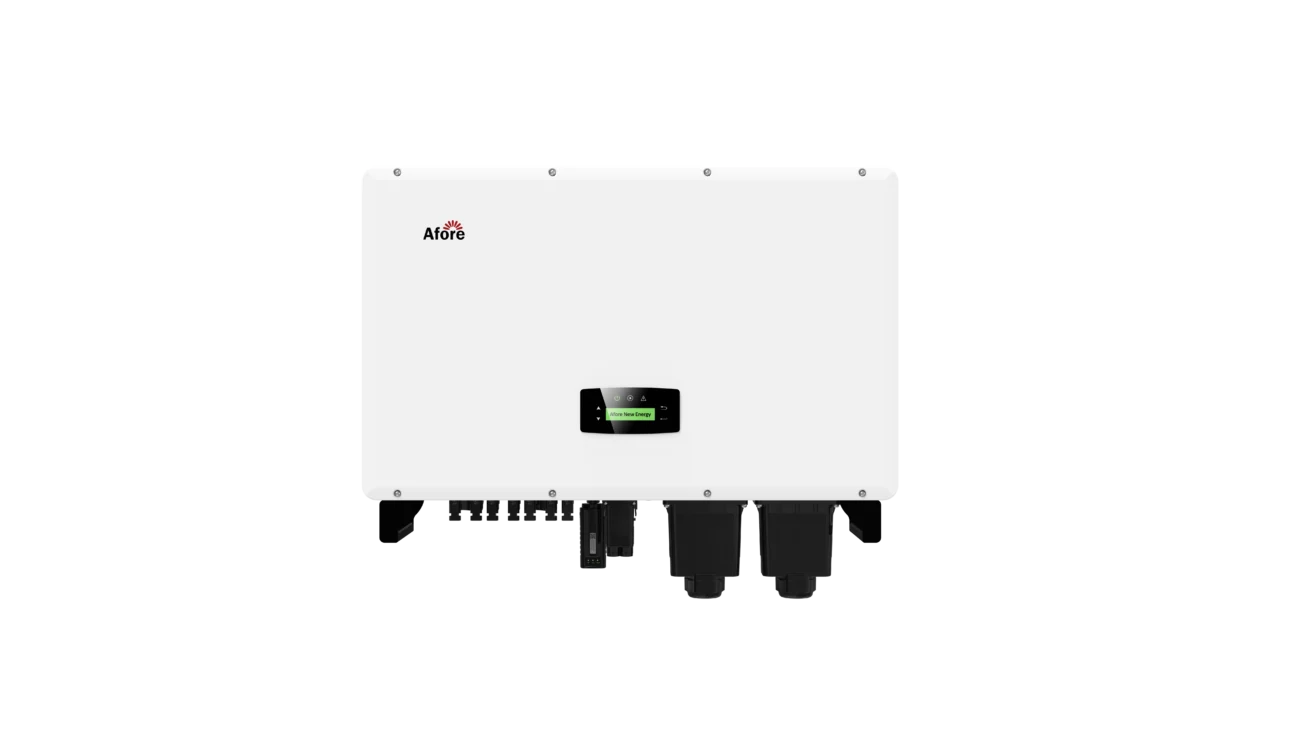
Comment choisir un bon onduleur (Guide d'achat)
Voici les éléments à prendre en compte.
Principales caractéristiques à rechercher
- Des puissances nominales en continu et en cas de surtension qui correspondent à vos besoins calculés.
- Sortie sinusoïdale pure, sauf si vous êtes absolument certain qu'aucune électronique sensible n'est impliquée.
- Rendement élevé, faible consommation à vide.
- Compatibilité avec les batteries : tension correcte, prise en charge des batteries Li ou de toute autre chimie choisie.
- Résistance à l'environnement : eau, poussière, température, etc.
- Caractéristiques : surveillance/télémétrie, protections, possibilité d'ajouter des onduleurs ou d'étendre le système.
Marque, assistance et garantie
- La réputation est importante. Les marques qui ont de bons antécédents, un bon service à la clientèle et des garanties solides coûtent souvent plus cher mais réduisent les risques.
- Réseau de soutien local : en cas de panne, disposez-vous d'un service d'entretien ou de pièces de rechange au niveau local ?
- Vérifier les garanties : l'onduleur et la batterie ont souvent des garanties distinctes ; ce qui est couvert (main-d'œuvre, expédition, défaillance sous charge) est important.
Adaptation de l'onduleur à votre cas d'utilisation
- Concevez-vous votre système pour une alimentation de secours ou pour une utilisation quotidienne de l'énergie solaire ? Ils impliquent des schémas d'utilisation différents.
- Une cabane hors réseau, une maison en ville, un véhicule récréatif ou un système de secours d'urgence impliquent chacun des contraintes différentes.
- Si vous avez besoin de faire fonctionner de grosses charges occasionnellement (CA, pompe à eau, etc.), vous pouvez choisir un onduleur qui gère les surtensions mais qui ne fonctionne qu'occasionnellement sous cette charge.
Erreurs et idées fausses les plus courantes
Depuis des années que j'aide les gens à acheter des panneaux solaires et des onduleurs, j'ai constaté certaines erreurs récurrentes. Évitez-les lorsque vous choisissez le bon onduleur.
- Sous-dimensionnement : Onduleur trop faible → surcharges → déclenchements/défaillances fréquents, stress, défaillance précoce.
- Surdimensionnement inutile : Gros onduleur lorsque la charge est faible → pertes d'efficacité, coût initial plus élevé, plus de déchets inutilisés.
- Ignorer l'alimentation de démarrage/de pointe → défaillance au démarrage du moteur ou lorsque le courant alternatif se met en marche.
- Tension de la batterie incorrecte / capacité de courant de la batterie insuffisante → chutes de tension, surchauffe, inefficacité ou danger.
- Sans tenir compte du déclassement (température, altitude, pertes de câblage).
- Acheter en se basant uniquement sur les watts affichés, sans tenir compte des spécifications, des certifications et de l'assistance dans le monde réel.
Conclusion
À ce stade, vous avez vu tous les ingrédients clés pour choisir le bon onduleur : connaître vos charges, tenir compte de la surtension, adapter la taille et la tension de la batterie, tenir compte de l'apport solaire en courant continu le cas échéant, surveiller les questions de rendement, de thermique et de sécurité, et planifier la croissance.
Si je vous laisse sur une mesure à prendre, c'est la suivante : faites un audit de charge. Prenez 30 à 60 minutes pour dresser la liste de tous les appareils que vous utilisez, mesurez ou recherchez les puissances, notez la fréquence et la durée de leur fonctionnement. Utilisez ces données pour appliquer les règles de dimensionnement ci-dessus. Choisissez ensuite un onduleur (ou un onduleur solaire) dont la puissance nominale continue dépasse largement cette somme + le tampon, dont la puissance nominale de surtension gère vos charges de démarrage, dont le parc de batteries répond à ses exigences et dont le fabricant vous offre la certification, la garantie et le service après-vente.
Lorsqu'il est bien fait, le choix du bon onduleur ne vous apporte pas seulement de l'énergie, mais aussi la tranquillité d'esprit. Vos lumières scintillent moins, vos appareils durent plus longtemps, vous évitez les surprises lorsque le réseau est défaillant ou que le soleil ne brille pas. Et souvent, vous économiserez de l'argent sur les coûts énergétiques au fil du temps. Si vous cherchez à acheter des onduleurs solaires fiables, vous pouvez vous rendre sur le site d'Afore. Afore est l'un des principaux fournisseurs mondiaux d'onduleurs solaires. les fabricants d'onduleurs solaires.
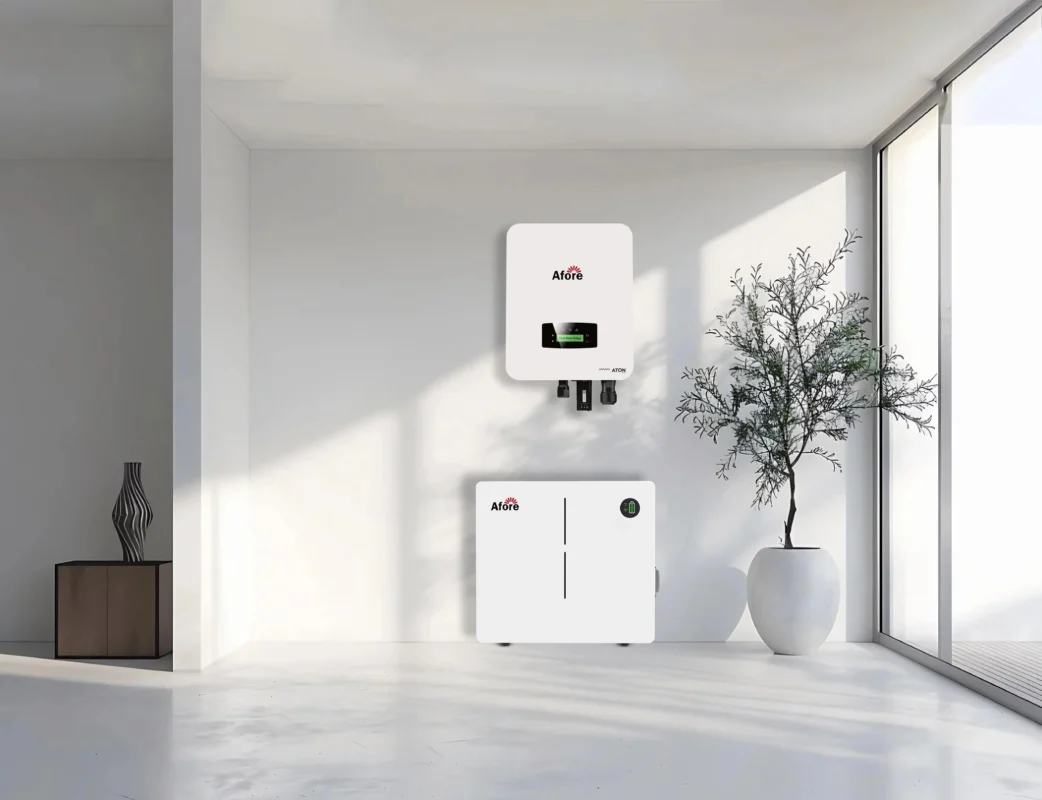
FAQ
-
Puis-je utiliser un onduleur de 2000W avec une batterie de 100Ah ?
Oui, mais seulement dans certaines conditions. Si votre batterie est de 100Ah à, disons, 12V, cela vous donne environ 1,2 kWh d'énergie théorique (100Ah × 12V ÷ 1 000). Un onduleur de 2000W fonctionnant à pleine charge consommera ~167A (sans tenir compte des inefficacités), ce qui est bien plus que ce qu'une batterie typique de 100Ah est conçue pour fournir pendant une longue période. Pour de courtes périodes, cela peut être correct ; pour des charges soutenues, vous allez épuiser et stresser la batterie, la dégrader plus rapidement, obtenir des baisses de tension. Il est préférable d'utiliser un plus grand parc de batteries (ou une tension plus élevée) pour utiliser correctement un onduleur de 2000W.
-
Dois-je prendre un onduleur de 2000 watts ou de 3000 watts ?
Cela dépend de la charge que vous prévoyez d'utiliser. Si votre consommation totale, plus les surtensions, est inférieure à ~1800-2000W, un onduleur de 2000W peut suffire. Mais si vous prévoyez de faire fonctionner plusieurs appareils de forte puissance (climatiseur, chauffe-eau, moteur lourd), ou si vous souhaitez disposer d'une marge de manœuvre pour une extension future, un onduleur de 3000 W offre plus de souplesse. Sachez également qu'un onduleur de 3 000 W peut être moins efficace en cas de charge légère, coûter plus cher, nécessiter un câblage plus épais et une plus grande capacité de batterie, mais qu'il est plus performant en cas de charge élevée.
-
Comment choisir un bon onduleur ?
Lorsque vous choisissez un bon onduleur, recherchez les caractéristiques suivantes : sortie sinusoïdale pure (énergie propre), caractéristiques nominales appropriées (continu et surtension), rendement élevé (en particulier pour votre charge typique), compatibilité avec la tension de la batterie, protections et certifications requises, réputation solide du fabricant, garantie et service après-vente local. Examinez quelques modèles, vérifiez les critiques, évaluez leurs performances dans des conditions réelles telles que les charges de démarrage, l'ombrage (pour l'énergie solaire), la température ambiante, et envisagez les possibilités d'extension.
-
Que dois-je vérifier avant d'acheter un onduleur ?
- Vérifier les spécifications de puissance en continu et en cas de surtension.
- Confirmer le type de forme d'onde (sinusoïdale pure ou modifiée).
- Vérifier la courbe d'efficacité et la consommation au ralenti.
- Adaptez la tension de l'onduleur à votre parc de batteries et à sa capacité actuelle.
- Confirmer la compatibilité chimique de la batterie.
- Vérifier les limites d'entrée (pour le convertisseur solaire : Voc et Isc maximum).
- Garantir les certifications de sécurité (UL, IEC, etc.), les protections (surchauffe, surcharge, etc.).
- Examinez la conception thermique, les besoins d'installation, la maintenance (ventilation, câblage).
- Examiner la garantie, l'assistance et la disponibilité des pièces. -
Dois-je acheter un onduleur plus grand que nécessaire ?
Oui, mais avec prudence. Un onduleur un peu plus grand vous permet de faire face aux surtensions et à la croissance future. Cependant, un onduleur trop grand signifie un coût plus élevé, plus d'espace, peut-être plus d'énergie gaspillée lorsque la charge est faible, et des pertes plus importantes au ralenti. L'astuce consiste à le dimensionner suffisamment pour le cas le plus défavorable (plus la mémoire tampon), mais pas trop pour qu'il soit inefficace la plupart du temps.
-
Qu'est-ce que l'écrêtage de l'onduleur et est-ce mauvais ?
L'écrêtage se produit lorsque vos panneaux solaires produisent plus de courant continu que ce que votre onduleur solaire peut convertir en courant alternatif à ce moment-là. L'excédent est tout simplement perdu. Un certain écrêtage est acceptable (et attendu) dans les systèmes dont le rapport DC/AC est supérieur à 1,2. Mais un écrêtage trop important réduit le rendement énergétique total de votre système. Lors du choix d'un onduleur solaire, il faut viser une bonne adaptation afin de minimiser l'écrêtage tout en maintenant les coûts et le dimensionnement de l'onduleur à un niveau raisonnable.
-
Quelle est l'influence de la géographie ou du climat sur la taille de l'onduleur ?
Les climats chauds entraînent un déclassement : les onduleurs perdent de la capacité à mesure que la température interne augmente ou que la température ambiante s'élève. L'altitude élevée peut également réduire l'efficacité du refroidissement par air. Par ailleurs, l'ensoleillement (heures d'ensoleillement, ombre, orientation) influe sur la puissance des panneaux que vous pouvez raisonnablement attendre. Si votre système est basé sur un onduleur solaire, tenez compte des conditions météorologiques les plus défavorables et des variations saisonnières.
-
Qu'est-ce que la puissance de pointe et pourquoi est-elle importante ?
La surtension ou la puissance de pointe est la puissance supplémentaire à court terme dont certains appareils ont besoin lorsqu'ils sont mis en marche : compresseurs, moteurs, pompes, unités de courant alternatif. Ces surtensions atteignent souvent 2 à 3 fois la puissance en cours d'utilisation. Si votre onduleur ne peut pas gérer la surtension, il se déclenchera, tombera en panne ou endommagera des composants. Par conséquent, lorsque vous choisissez le bon onduleur, vérifiez toujours et dimensionnez-le en fonction de la plus grande surtension de votre charge prévue, plus une marge de sécurité.
-
Quelle est la durée de vie de mon onduleur ? Qu'en est-il des garanties et de l'entretien ?
Un onduleur de bonne qualité utilisé correctement peut durer de 10 à 15 ans, voire plus. La durée de vie dépend de l'utilisation, des conditions environnementales, de la fréquence des surcharges, de la ventilation et de l'entretien (poussière, chaleur, câblage). Recherchez une garantie solide (souvent de 5 à 10 ans), vérifiez si les pièces sont remplaçables, si un service après-vente est disponible et si le fabricant est réactif.
Comment dimensionner l'onduleur lors de l'intégration d'un système de stockage par batterie ?
Combinez votre calcul de charge (fonctionnement + surtension + tampon) avec la durée pendant laquelle vous souhaitez fonctionner pendant les pannes ou sans énergie solaire. Assurez-vous ensuite que le parc de batteries a une capacité suffisante (kWh) et qu'il peut fournir le courant nécessaire à la tension de la batterie avec des pertes acceptables. Assurez-vous également que le type de batterie supporte le taux de décharge et la profondeur de décharge nécessaires. Pour les systèmes à onduleur solaire, vous devez également disposer d'un régulateur de charge suffisamment dimensionné pour l'entrée solaire. -
Un onduleur hybride est-il préférable pour les maisons qui prévoient l'installation d'un système solaire et d'un système de secours ?
Les onduleurs hybrides peuvent être un excellent choix lorsque vous souhaitez à la fois produire de l'énergie solaire au quotidien et disposer d'un système de secours en cas de panne du réseau. Ils vous permettent d'intégrer l'énergie solaire, les batteries et les entrées du réseau ou du générateur dans un seul système. Vous bénéficiez de transitions plus douces, de pertes d'énergie réduites (s'ils sont bien conçus) et d'une simplification potentielle des coûts et du câblage. Cependant, les systèmes hybrides sont plus complexes, ont tendance à coûter plus cher et vous devez vérifier si les spécifications de l'onduleur hybride, sa capacité de surtension et sa compatibilité avec les batteries correspondent à vos besoins.




